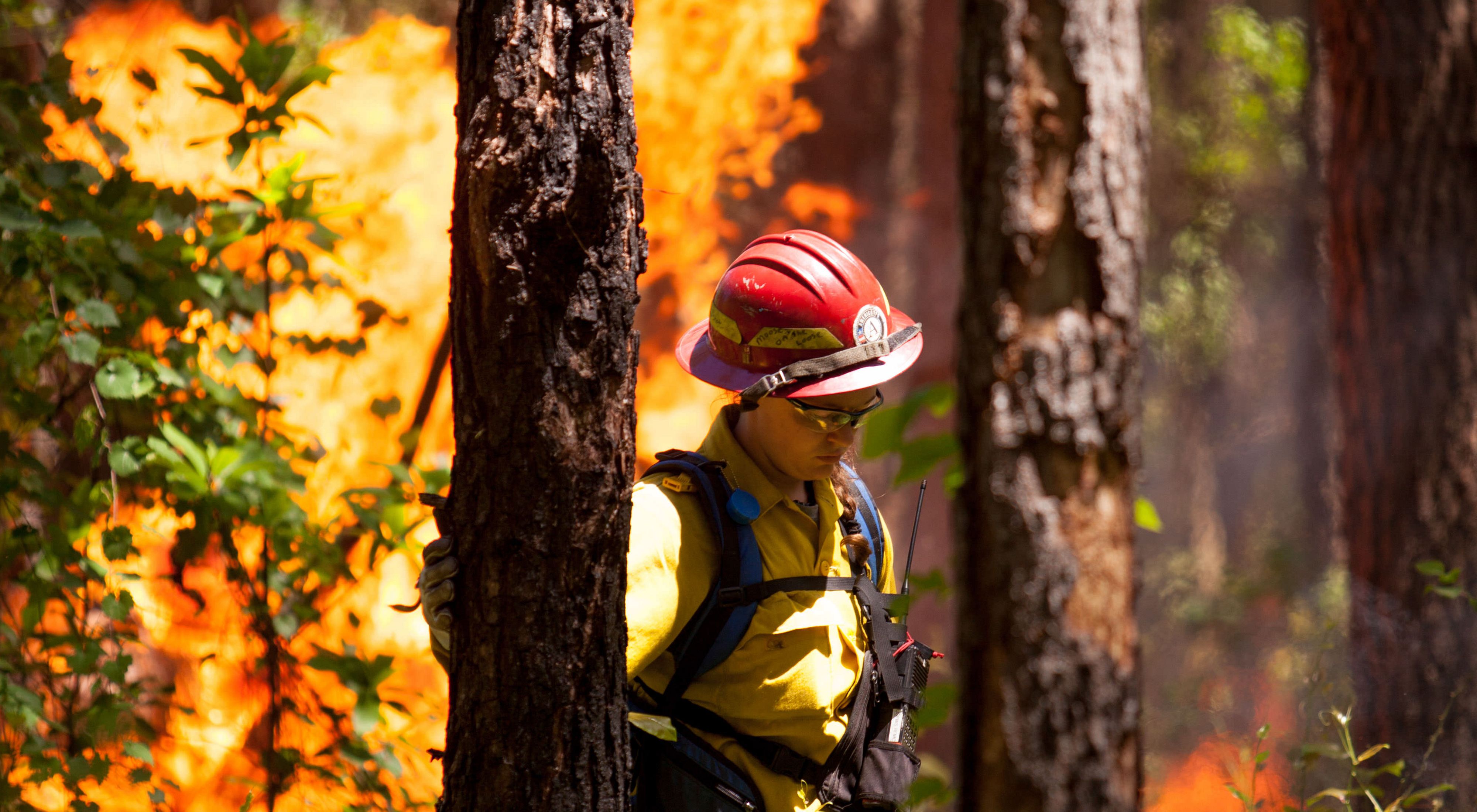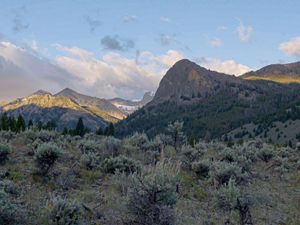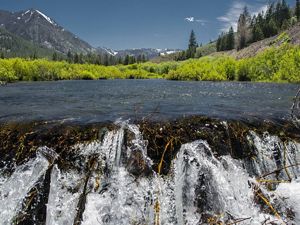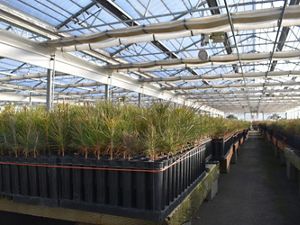Wildfires and Forest Management
Charting a new path towards more fire-resilient forests and communities.
Across the Northwest, forests are vital to our way of life. They provide critical habitat for Idaho’s iconic native wildlife. They are also places where Idahoans live, work and play, sustaining the state’s recreation and timber economies and the communities that depend on them.
The forests that sustain us are facing unprecedented threats. Fire suppression combined with warmer, drier temperatures are creating conditions that make our forests—and communities—more vulnerable to larger and increasingly intense megafires. Scientists and forest managers are now reconsidering how to use fire as tool to maintain the long-term health of our forests.
Forests Without Fire
Fire has been essential to the health of forest ecosystems for millennia. Untamed and frequent burns, sparked by lightning, shaped the diversity of life—nearly 80 percent of the native vegetation in North America evolved with fire. Since time immemorial, Indigenous peoples in North America skillfully used fire to manage the land, benefitting people and nature alike.
But for the last century, fire suppression and exclusion practices have been predominant in fire-adapted places, creating hazardous and unhealthy conditions. This is exacerbated by increasingly warm and dry conditions caused by climate change. Forests have grown dense, making them prone to insect and disease outbreaks. These crowded forests provide a ladder for flames to reach high into the tree top or crown and produce more intense blazes that are harder to manage. Additionally, buildup of fuels on the ground reduces fire and drought resiliency. In the absence of low-intensity and frequent burns, forests are less healthy, wildlife habitat is lost and communities are threatened by the increased risk of major fire events.
What can we do to reduce the frequency and intensity of catastrophic wildfires? The answers include restoring our forests to historically healthier conditions through fuels reduction and controlled burning, building community resilience in fire-prone areas through public education and outreach, and fixing funding and land management policy.
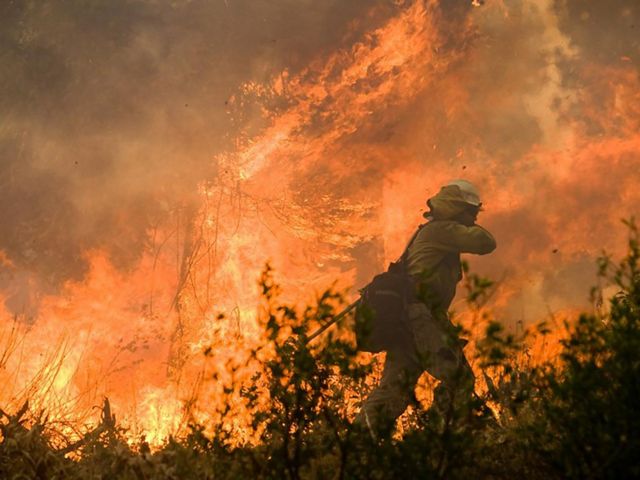
Restoring Forests
On-the-ground forest restoration includes a variety of practices such as thinning smaller diameter trees and using controlled burns that reduce highly flammable fuels. Controlled burning, also called prescribed burning or prescribed fire, is a method of lighting a fire in a specific area after careful planning and under safe, controlled conditions. It’s one of our most valuable tools for restoring healthy forests and preventing catastrophic wildfires.
In other places, restoration may include reducing the density of trees and creating a network of openings in the forest canopy that was typical of many Idaho forests in the era before fire suppression. Such practices enable the continuity of the timber harvest industries that local communities depend on, while giving ponderosa pine and other fire-resistant trees more room to grow.
TNC’s forest and fire program aims to double the number of acres treated across Idaho—from 50,000 to 100,000 acres—through a range these forest management practices.
In order to accomplish this, TNC is working collaboratively with the United States Forest Service (USFS) and other agencies and partners, such as TNC’s nationwide North America Fire Initiative, to improve management of forests. TNC is also a founding member of the newly-created Idaho Prescribed Fire Council, a first-of-its-kind statewide coalition bringing together landowners, Tribes, federal and state agencies, policymakers and citizens to promote the safe and effective use of prescribed fire across Idaho.
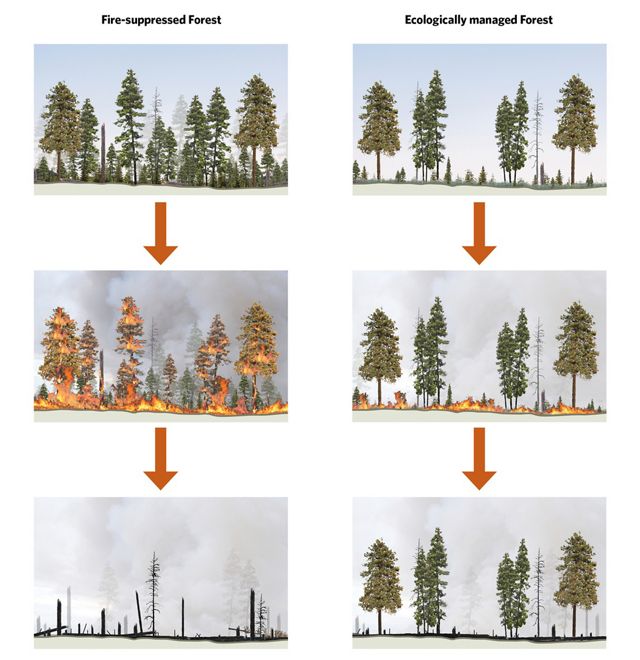
Living Near Wildfire
Over the last 40 years, the 3-million-acre Caribou-Targhee National Forest near Yellowstone National Park has experienced a 95% decline in annual burning due to fire suppression. This has resulted in an uncharacteristic buildup of forest debris that is more prone to catastrophic wildfires. Working with the USFS, TNC is bringing together experienced scientists and land managers, along with a dedicated prescribed fire crew, to reduce fuel for fire by removing dead and fallen trees as well as standing mature green trees on public land near communities deemed at high risk to wildfire.
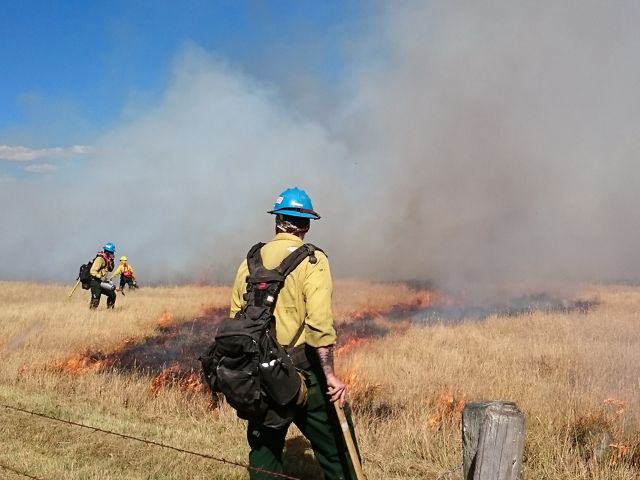
“The hope is that after our work is complete, the change in fuel, crown spacing and forest structure will keep a crown fire from continuing onto the subdivision and will bring it back down to the ground, where firefighters can safely respond,” said Matthew Ward, TNC’s resilient forests strategy manager.
This effort is part of a two-pronged approach; as the Forest Service reduces fuel on public lands, TNC and others are offering technical and financial assistance and community outreach to nearby private landowners to help them reduce fuels on their property, to further improve forest conditions and to improve the safety and education of communities living near wildfire.
Building on this model, TNC expanded forest restoration efforts through an agreement with the Idaho Panhandle National Forest (IPNF) in North Idaho. TNC crews have successfully completed a project that effectively removed hazardous flammable materials in a wildland-urban interface area of Kootenai County, helping reduce the threat of severe wildfires to the forest and nearby communities. Over the coming years, TNC and IPNF will coordinate to deploy experienced, trained crews to primarily focus on proactive treatments.
Fire Funding Fix
Invasive insects and disease outbreaks, fire suppression and climate change are factors in the unprecedented severity, frequency and cost of wildfires. The full burden of fighting these fires falls on the USDA Forest Service and the Department of the Interior. Dramatic increases in wildfire response costs depletes forest management funds, leading to more severe fires and increased fire suppression spending, creating a vicious cycle. That puts wildlife, recreation, clean water, public safety and the economic viability of our forests at risk.
In 2018, a team of policy experts at TNC, which included TNC Idaho’s former Government Relations Director Will Whelan, helped pass monumental legislation that supports the U.S. Forest Service in managing forest and wildfires. The bipartisan Wildfire Disaster Funding Act includes a contingency account for fighting wildfire funded with up to $2 billion a year for a decade. Dedicated funding for firefighting frees up funding that can be used for proactive management to reduce the risk of megafires.
The magnitude of the fire fix victory illustrates the scale of what is possible.
